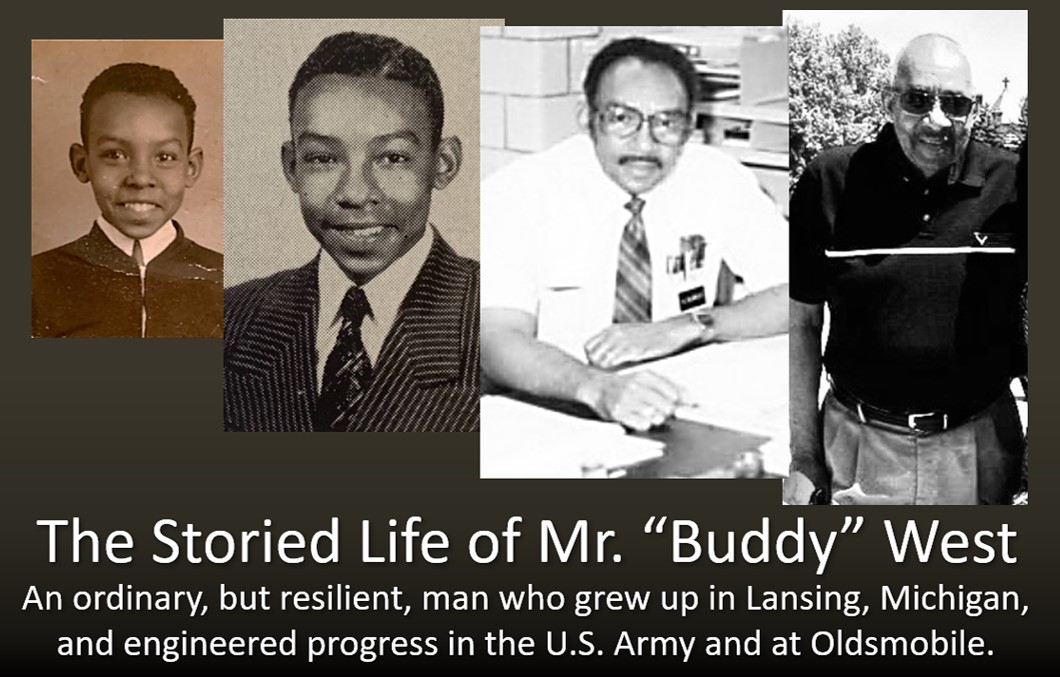Go to TFM Triple Fight Museum
 See Fights and Fighters that mattered from 1890 to 1929.
See Fights and Fighters that mattered from 1890 to 1929.
Welcome,
We are delighted to have you spend a little time with US.
At this website, we share stories that reveal how Americans, across time, have been touched by THE TRIPLE FIGHT in America. When we say TRIPLE FIGHT, we mean one or more of three types of Fights: 1) Fights in Rings (Boxing), 2) Fights Among Nations (Military Expeditions), and 3) Fights for Equality and Justice.
If you are interested in exploring how these three categories of Fights evolved and shaped our world during the first three decades of the 20th century, then visit our parent website, triplefightmuseum.com.
Thank you for taking time to learn about THE TRIPLE FIGHT and about US.
Here is a story we are currently working on.

Meet Harry “Buddy” West, a life-long resident of Lansing, Michigan, and the grandson of a man who played in the Negro Leagues. At 90, Buddy is still independent, active, and full of stories. One story he shared with US involved his stint in the U.S. Army, during the Korean War. Buddy was stationed at a base in Oklahoma; and was responsible for assigning new recruits to various barracks. Buddy made the assignments without giving consideration to the race of the incoming soldiers. Now, this might not sound like a big deal today, but in the early 1950s, when Buddy was making the assignments, segregation was the order of the day. Most residents of Oklahoma were not too keen on such progressive notions as integration. One must remember, Buddy was making barrack assignments less than 35 years after the race massacre in Tulsa, Oklahoma.
Buddy told US that he had his share of exposure to racism in Oklahoma, but he did not allow that to influence his view of humanity. Buddy attended an integrated high school in Lansing, and worked in an integrated plant making parts for Oldsmobile. Those experiences and his family’s values taught him to judge people based on their character and behavior.
We can hardly wait to finish our piece on Buddy West. We think he offers a compelling look at how he was touched by THE TRIPLE FIGHT in America.
Thank you for allowing US to introduce you to “Buddy” West and for being patient with US. We look forward to sharing more of Mr. West’s stories, in the near future.
See you soon.
Go to TFM Triple Fight Museum
 See Fights and Fighters that mattered from 1890 to 1929.
See Fights and Fighters that mattered from 1890 to 1929.
Welcome,
We are delighted to have you spend a little time with US.
At this website, we share stories that reveal how Americans, across time, have been touched by THE TRIPLE FIGHT in America. When we say TRIPLE FIGHT, we mean one or more of three types of Fights: 1) Fights in Rings (Boxing), 2) Fights Among Nations (Military Expeditions), and 3) Fights for Equality and Justice.
If you are interested in exploring how these three categories of Fights evolved and shaped our world during the first three decades of the 20th century, then visit our parent website, triplefightmuseum.com.
Thank you for taking time to learn about THE TRIPLE FIGHT and about US.
Here is a story we are currently working on.

Meet Harry “Buddy” West, a life-long resident of Lansing, Michigan, and the grandson of a man who played in the Negro Leagues. At 90, Buddy is still independent, active, and full of stories. One story he shared with US involved his stint in the U.S. Army, during the Korean War. Buddy was stationed at a base in Oklahoma; and was responsible for assigning new recruits to various barracks. Buddy made the assignments without giving consideration to the race of the incoming soldiers. Now, this might not sound like a big deal today, but in the early 1950s, when Buddy was making the assignments, segregation was the order of the day. Most residents of Oklahoma were not too keen on such progressive notions as integration. One must remember, Buddy was making barrack assignments less than 35 years after the race massacre in Tulsa, Oklahoma.
Buddy told US that he had his share of exposure to racism in Oklahoma, but he did not allow that to influence his view of humanity. Buddy attended an integrated high school in Lansing, and worked in an integrated plant making parts for Oldsmobile. Those experiences and his family’s values taught him to judge people based on their character and behavior.
We can hardly wait to finish our piece on Buddy West. We think he offers a compelling look at how he was touched by THE TRIPLE FIGHT in America.
Thank you for allowing US to introduce you to “Buddy” West and for being patient with US. We look forward to sharing more of Mr. West’s stories, in the near future.
See you soon.
